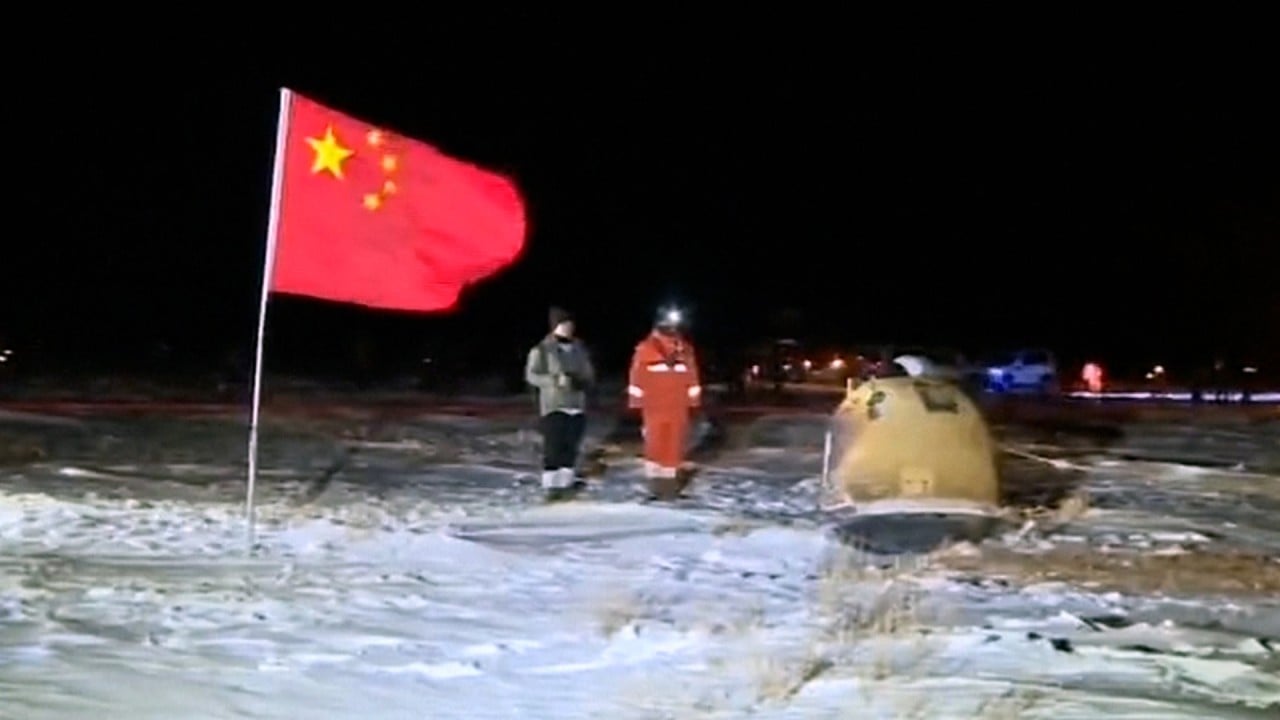
China calls for developers in Chang’e 8 mission to make and assemble moon bricks
- CNSA is looking for interested businesses, universities and research institutes to develop nine instruments for the 2028 expedition
- They include a robot to assemble structures made from lunar soil, and transport materials between the lander and the moon’s surface
The CNSA said on its website last week that it aimed “give full play to the strengths of all parties” and achieve internationally advanced technologies and innovative research results.
Teams from enterprises, universities, and research institutes have until March 10 to register their intentions, along with preliminary proposals that are technically feasible, financially viable, and manageable within the mission timeline.
The mission – consisting of a lander, rover, and robot – will deliver 14 scientific instruments to the moon. They will study local geology and test technologies for resource utilisation, as well as conduct observations of the Earth.
China unveils construction road map for lunar research station
The CNSA is calling for development submissions on nine of them, including an in situ device on the lander tasked with using solar energy to melt lunar soil and turn it into “functional parts” at a minimum speed of 40 cubic cm (16 cubic inches) per hour.
According to the CNSA’s description, the 50kg instrument (110lbs) will be expected to monitor the soil’s shape and temperature during melting and moulding, as well as measure the mechanical and thermal properties of the manufactured results.
A 100kg robot, mainly powered by battery, will prepare a working area on the lunar surface and transfer the parts – measuring either 5cm x 5cm x 3cm (2ins x 2ins x 1in) or 10cm x 10cm x 6cm (4ins x 4ins x 2.4ins) – from the lander and assemble them.
The robot will need to be able to travel at a maximum speed of at least 400 metres (1,310 feet) per hour, as well as unload instruments from the lander and deploy them on the moon’s surface with a high degree of accuracy, according to the description.
The instruments will include a seismometer and multiple sensors for a low-frequency electromagnetic field detector for investigating quakes – which are frequent at the lunar south pole – and the moon’s deep structure.
The robot will also be helping to collect and add moon rocks to a sample analysis device on board the rover, which will process and analyse their chemical composition and age to further understanding of the moon’s evolution.
According to the CNSA description, some of the rocks collected by the rover will be stored on the moon, to be retrieved by later missions for detailed lab analysis on Earth.
The Chang’e 8 mission also requires a 36kg small-scale terrestrial ecological experimental device to test life-supporting technologies for a long-term human presence on the moon.
The device, to be based on the lander along with other instruments, will need to provide a sealed and controlled environment for the testing of lunar soils, as well as plants and microbes from Earth.
CNSA officials revealed in October that 200kg of the Chang’e 8 payload will be reserved for partner countries working with China at the mission, system or payload level.
China offers more space for foreign equipment on future moon mission
At the 74th International Astronautical Congress in Baku, Azerbaijan, they also said that candidate landing sites for the mission include Leibnitz Beta, Amundsen crater, Cabeus crater, and the Shackleton-de Gerlache Ridge.
The next mission is this year’s Chang’e 6, which aims to be the first to retrieve samples from the far side of the moon. Chang’e 7 is slated to fly in 2026, taking a hopper to hunt for water ice at the lunar south pole.
All of China’s planned Chang’e missions will be testing technologies to pave the way for Chinese astronauts to land on the moon before 2030.


